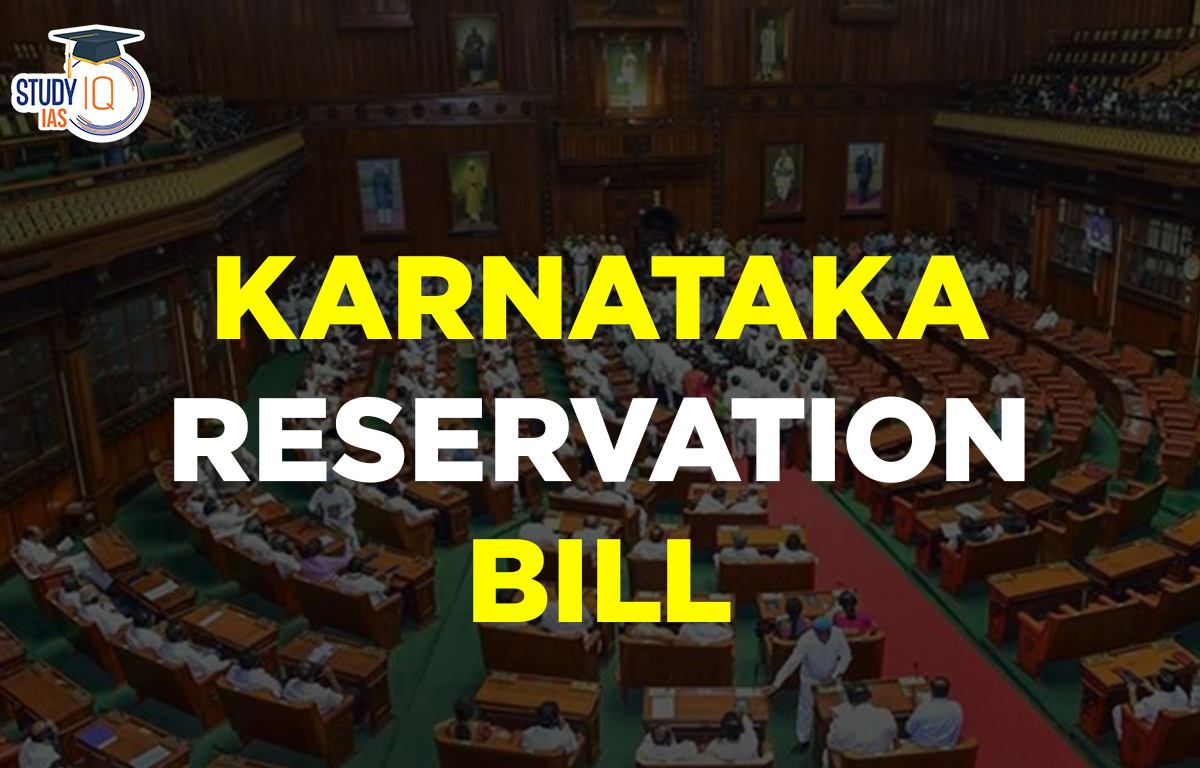Table of Contents
Highlights of the Karnataka Reservation Bill
- Karnataka Scheduled Castes and Scheduled Tribes (Reservation of Seats in Education Institutions and of Appointments or Posts in the Services Under the State) Bill, 2022, was introduced in the assembly.
- It will replace the ordinance with the same title, which had increased reservation for SCs from 15 to 17% and for STs from 3% to 7%, that was promulgated on October 23.
- This takes the total reservation tally to 56%, above the 50% ceiling fixed by the Supreme Court.
Rational for Increase in Reservation
- HN Nagamohan Das report:
- Decision was taken following the recommendation from a commission headed by a retired judge of Karnataka high court justice HN Nagamohan Das.
- There was backwardness in populations living in the far-flung areas in the Western Ghats and in the drier regions of the state
- Inadequate representation of SCs and STs in education institutions and government jobs.
- Justice Subhash Adi report:
- It cited a study by National Law School of India University, Bengaluru, which states that 74 per cent of tribal communities have remained invisible and their literacy rates are lower than 3 per cent.
- It compared the number of castes included under the SCs and STs in Karnataka vis-a-vis other states, it can be seen that though other states have notified a smaller number of castes, their percentage of reservation is higher.
- Madhya Pradesh, Rajasthan and Uttar Pradesh were given as examples.
Reservation in India
- Constitution of India: The reservation is mentioned in Article 46 of Part IV of the Constitution of India, which contains Directive Principles of State Policy (DPSPs).
- Article 46 states, “The state shall promote with special care the educational and economic interests of the weaker sections of the people, and, in particular, of the Scheduled Castes and the Scheduled Tribes, and shall protect them from social injustice and all forms of exploitation.”
- Principle of Article 46 is reflected in Articles 15 and 16 of the Constitution which actually provide for the provisions of reservations in education and employment.
- Articles 330 and 332 of the Constitution reserve seats for SCs and STs in Lok Sabha and state assemblies.
- Reservation Structure:
- It is provided to Scheduled Castes (SCs), Scheduled Tribes (STs) and Other Backward Classes (OBCs) at the rate of 15%, 7.5% and 27%, respectively, in case of direct recruitment on all India basis by open competition.
- In direct recruitment on all India basis, other than by open competition, the percentage fixed is 16.66% for SCs, 7.5% for STs and 25.84% for OBCs.
- Apart from this, 10% reservation under the Economically Weaker Section (EWS) category applies to those not covered under the existing scheme of reservations.
Supreme Court’s Opinion on Reservation
- Indra Sawhney case, 1992:
- In this case, Supreme Court capped reservations at 50% in 1992.
- It introduced the concepts of “creamy layer” and reinstated the 50 per cent reservation ceiling.
- SC noted that economic criteria cannot be the only basis for reservation.
- EWS reservation judgment, 2022:
- Supreme Court stated that the EWS reservation was constitutional.
- Impact: Breach of the 50 per cent cap on reservations in the Supreme Court judgment on EWS reservations has paved way for several parties and states to propose their own reservation policies breaching 50 per cent cap,

Capping on Reservation
- For one, the 50% capping has no legislative backing.
- No state or Union legislature has proposed such a cap.
- 50% cap bears little relation to the population that is covered under reservations, which far exceeds the 50% number.


 New Window of Opportunity for India amid...
New Window of Opportunity for India amid...
 Cetacean Morbillivirus: Meaning, Feature...
Cetacean Morbillivirus: Meaning, Feature...
 Acid Attacks in India: Causes, Laws, Sta...
Acid Attacks in India: Causes, Laws, Sta...

























